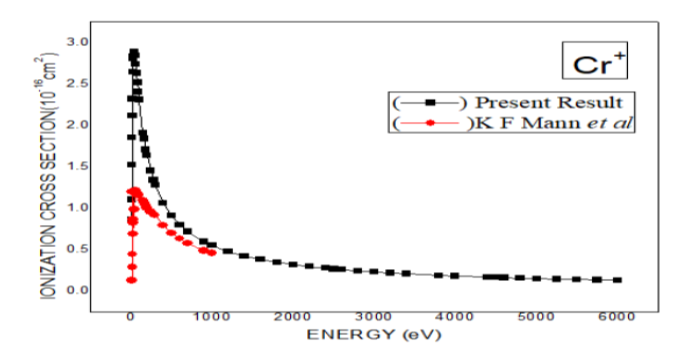


Indian Journal of Science and Technology
Year: 2021, Volume: 14, Issue: 2, Pages: 170-180
Original Article
Praveen Bhatt1,2*, Sushil Kumar3
1Adjunct Faculty, Banasthali Vidyapith, Banasthali, Rajasthan, India
2Professor, APIIT SD INDIA, Panipat, Haryana, India
3Research Scholar, Department of Physics, Banasthali Vidyapith, Banasthali, Rajasthan, India
*Corresponding Author
Email: [email protected]
Received Date:02 November 2020, Accepted Date:26 December 2020, Published Date:21 January 2021
Abstract:The theoretical model, developed by S.P. Khare, has been modified to evaluate the total cross sections for ionization of Chromium atom due to electron impact at incident electron energy from ionization threshold to 6000 eV. The various calculated cross sections are in remarkable agreement with available experimental data and other theoretical cross sections. For Chromium atom, good agreement between theory and experiment is achieved. Objective: Our objective is to find the partial and total ionization cross sections for Chromium atom and its fragmentation ion at different energy levels and interpretation of results with other available data. Method:-The theoretical semi-empirical model, developed by S.P. Khare, has been remodeling to evaluate the total cross sections for ionization of Chromium atom due to electron impact at incident electron energy from ionization threshold to 6000eV. Findings: A good agreement is observed when we compared our data for electron impact ionization cross section for Cr6+, Cr7+, Cr8+ and Cr10+ fragment ions. Also some disagreement is found between our data and other available data. Our results are higher for Cr7+, Cr8+ fragment ions. For Chromium atom, good agreement between theory and experiment is achieved. Novelty: Electron impact ionization is engaged to produce positive and negative ions in many areas of physics and chemistry such as plasma studies, fusion modeling, radiation physics and gas discharges to more abstract applications such as astrophysical applications and modeling of planetary atmospheres.
Keywords: cross- section; impact; spectroscopy
© 2021 Bhatt & Kumar.This is an open access article distributed under the terms of the Creative Commons Attribution License, which permits unrestricted use, distribution, and reproduction in any medium, provided the original author and source are credited. Published By Indian Society for Education and Environment (iSee)
Subscribe now for latest articles and news.